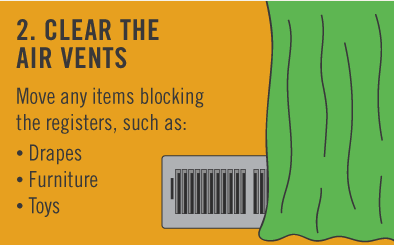Detailed Directions For Property Owners On Heat Pump Setup
Detailed Directions For Property Owners On Heat Pump Setup
Blog Article
Produced By-Cooke Pratt
As a home owner, starting the setup of a heat pump demands accuracy and interest to detail. From understanding your heating and cooling needs to selecting the ideal device, each action plays a crucial function in the system's total performance. Guaranteeing a seamless installment involves more than just placing the unit; it needs a methodical technique that ensures performance and longevity. So, as you prepare to tackle this task, remember that the trick to an effective heat pump installment lies in the careful execution of each action in the procedure.
Planning for Installment
When getting ready for the setup of a heatpump in your home, it's vital to begin with a detailed plan. Begin by evaluating your home's heating and cooling needs. Think about variables such as the size of your home, insulation high quality, and neighborhood climate. This analysis will aid figure out the appropriate dimension and kind of heat pump for your space.
Next off, develop an allocate the project, consisting of not just the cost of the heat pump itself but additionally installation expenditures, allows, and any type of necessary upgrades to your electric system.
Research credible a/c companies in your area and gather several quotes to compare prices and services used. It's essential to select an accredited and skilled service provider to guarantee the installation is done correctly.
As soon as you've selected a service provider, timetable a site see for them to review your home and give an in-depth installation plan. See to it to talk about any kind of specific needs or choices you have for the installment procedure.
Mounting the Heat Pump
To proceed with the installation of the heatpump in your house, the following step includes the real process of installing the device.
Begin by positioning the outdoor device on a stable surface area outside your home. Guarantee that there's enough clearance around the system for appropriate air flow.
Next, link the outside system to the interior device utilizing cooling agent lines. These lines must be protected to avoid power loss. Securely fasten the systems to the placing brackets and make sure they're level for ideal procedure.
Once the systems remain in place, link the electrical wiring following the supplier's instructions carefully. Verify all links to ensure safety and correct performance.
Finally, add the refrigerant to the system, making sure to comply with the correct treatments to stay clear of leakages or damage.
Complying with these steps will guarantee a successful setup of your heat pump, providing effective heating and cooling down for your home.
Testing and Upkeep
As soon as the heat pump setup is total, it's essential to perform routine screening and upkeep to make sure optimal efficiency and longevity of the system.
Start by checking the filters each to 3 months, cleaning or changing them as needed to preserve effectiveness.
Evaluate the exterior device for debris or blockages that might hamper air movement, and clear any type of plant life or things around it.
Evaluate the thermostat setups, adjusting if essential, and guarantee the temperature level analyses are exact.
Look for any type of unusual noises, vibrations, or odors during operation, as these can show underlying concerns.
Schedule professional maintenance at least once a year to check and tune up the system, ensuring all components are operating appropriately.
air con repair near me improves efficiency but additionally expands the lifespan of your heat pump, conserving you cash over time.
Final thought
Now that you've successfully installed your heatpump, do not forget to set up normal maintenance to maintain it running successfully. Keep in mind to inspect filters, check the system, and routine expert tune-ups to ensure optimal performance. By following these actions and taking good treatment of your heatpump, you can appreciate reputable home heating and cooling for several years to come. Congratulations on completing the setup process!
